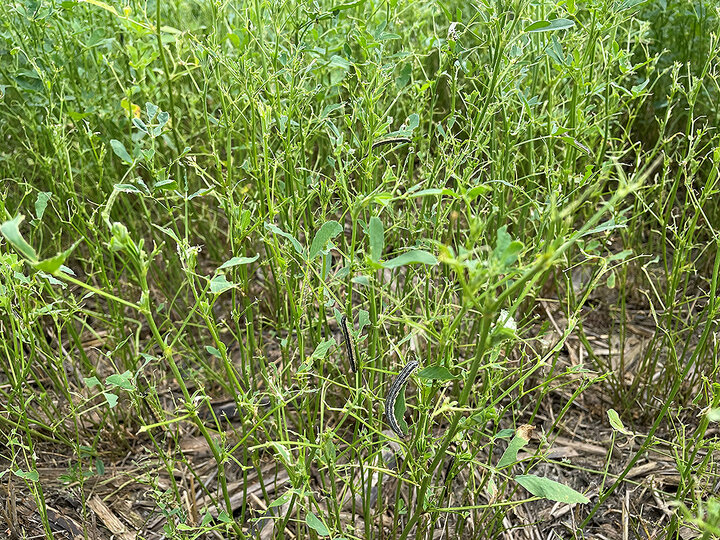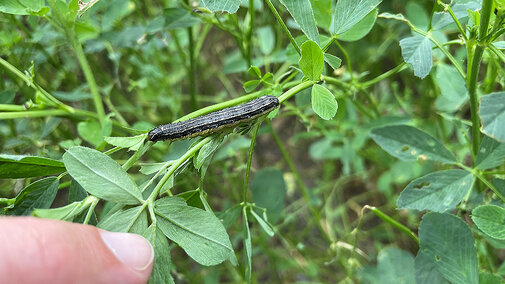We had two reports of fall armyworms damaging alfalfa in Gage and Otoe counties last week. Fall armyworms have been abundant in states to the south of us recently, including Kansas and Missouri.
In both cases, the armyworms were in their last stage, and a decision was made to treat one of these fields and harvest the other. Caterpillars do most of their feeding in the last stage. If you are not watching fields on a regular basis, you may not notice damage or armyworms until they are large and doing significant damage.

Kansas State University Extension Entomologists state: “One to two worms per square foot can destroy seedling alfalfa, and populations of 10 to 15 per square foot have been observed to destroy 12- to 14-inch alfalfa. Treatment is not advised unless the majority of larvae are less than 3/4 inch long.” Insecticide options they list include products with active ingredients including the pyrethroids, Alpha-cypermethrin, Beta-cyfluthrin, cyfluthrin, Gamma-cyhalothrin, Lambda-cyhalothrin, permethrin and Zeta-cypermethrin, organophosphates, chloropyrifos, and carbamates, carbaryl and methomyl.
See Nebraska Extension Circular 130 for a listing of products and rates. Large caterpillars (3/4 inch long or more) are close to maturity, may have already done most of their feeding and are harder to control with insecticides. Another control option would be to harvest the alfalfa if the crop growth stage is appropriate.
Fall armyworms, Spodoptera frugiperda, are a southern species that does not overwinter in Nebraska. As populations build up during the summer, moths fly north often reaching the Midwest later in the summer or early fall — hence their common name.
A related species, the yellow-striped armyworm, Spodoptera ornithogalli, has been seen in south-central soybeans the last few weeks in low numbers. They can also feed on alfalfa. These larvae look very similar and can be confused. A key character to differentiate these two species is that the fall armyworm has four spots on the top of the last abdominal segment forming a square. The yellow-striped armyworm lacks these spots. There can be a great deal of color variation in both species.
Given the populations of fall armyworms to the south of us, it is likely moths will continue to be present in southern Nebraska for a while. Fall armyworms have a broad host range and can feed on broadleaf and grassy crops. Be sure to get out and monitor newly seeded alfalfa and wheat as seedling plants can be killed rapidly by caterpillars feeding on them.

